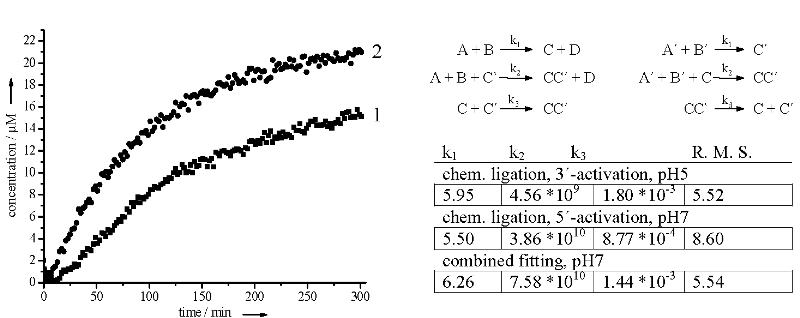Cross-catalytic self replication system
Experiments revealed a very fast template directed ligation reaction
for 3'- and 5'-activation. Since side reactions are little and both
systems are complementary, a combination of both ligation cycles that
leads to a cross catalytic replication system was synthesised. In the
cross catalytic replikator system only one catalytic circle is
fluorescently labelled while the other template induced cycle is not
observed. In test experiments the observed parabolic growth kinetics
indicate a template formation for the observable ligation reaction
(Figure 32a).

Figure 32a
Beside a temperature effect on replication it was shown that a disulfide template C'* has a catalytic effect as well as the natural template C'. Experimental data were rationalized using our SimFit program. Calculations were based on a simplified reaction models (Figure 32b). It was assumed that the reaction rates for 3- and 5'-activation are comparable. Rate constants for chemical ligation and cross-catalysis could be determined in a combined fitting.

Figure 32b
We developed an activator independent chemical DNA ligation or replication system combined with a fluorescence quenching analytic system suitable to monitor self-replication in microfluidic experiments. The ligation reaction is strongly pH-dependent and can therefore be manipulated. We successfully oppressed undesirable side reactions. In opposite to EDC activated replication systems the new ligation chemistry allows to analyze ligation reactions at low concentrations and in any suitable temperature range. [42]

